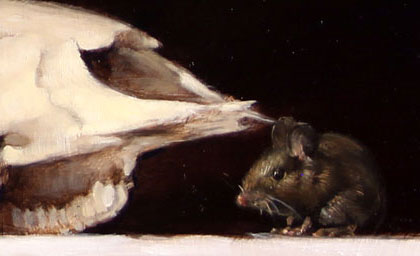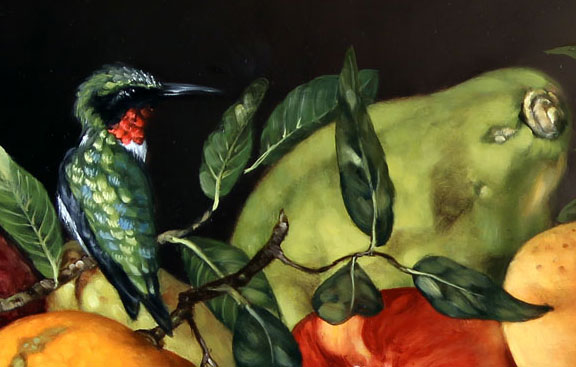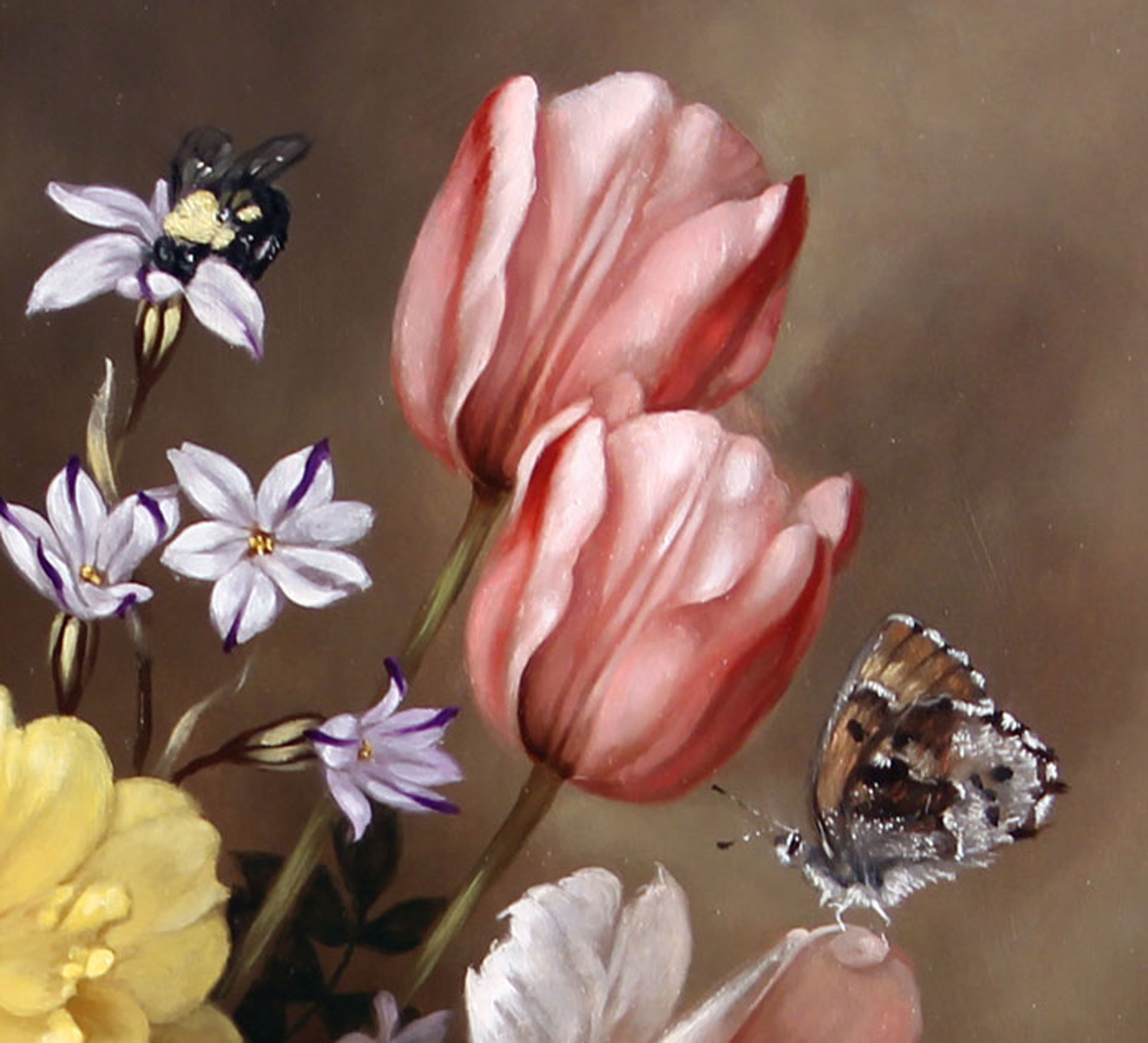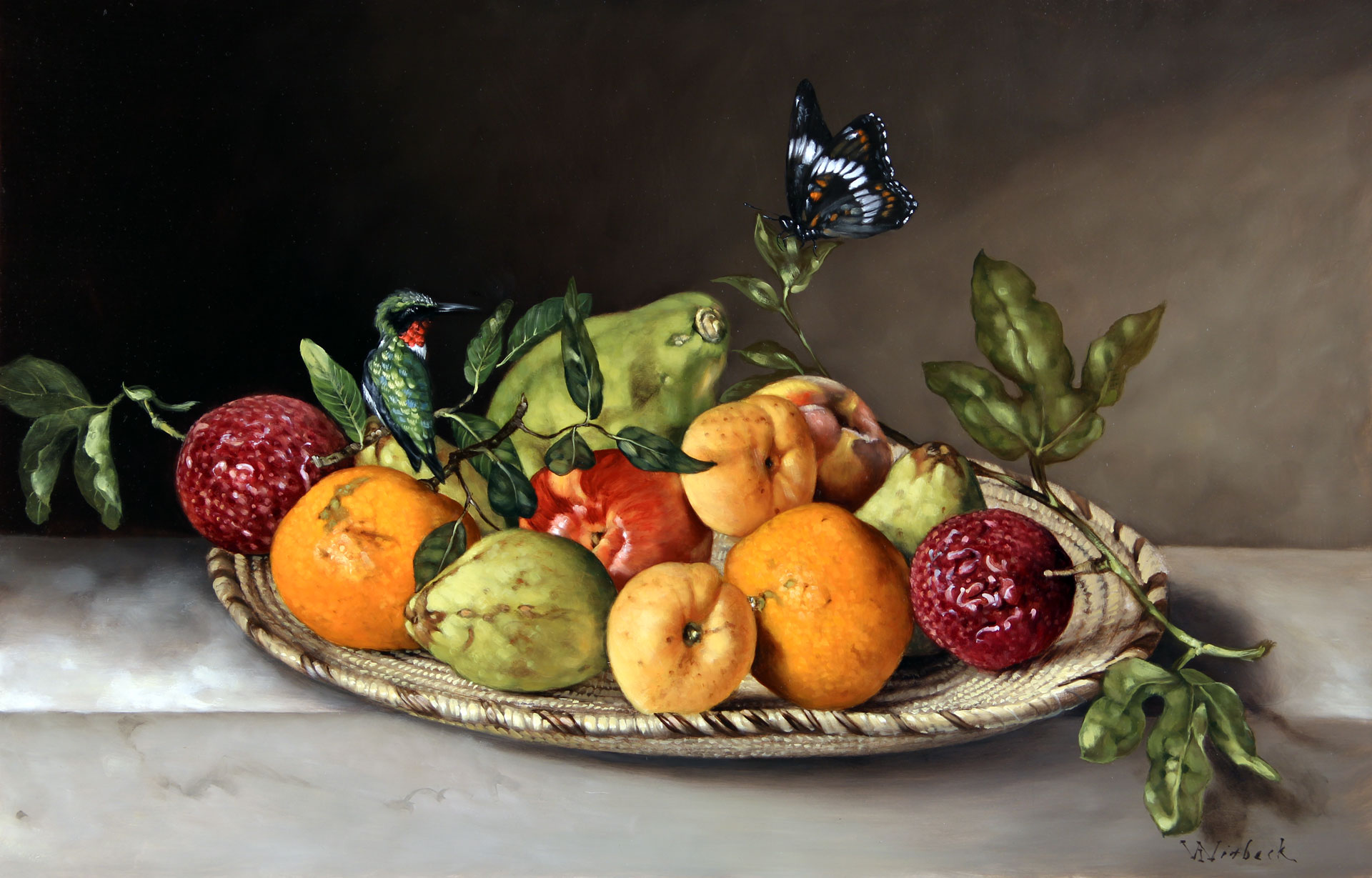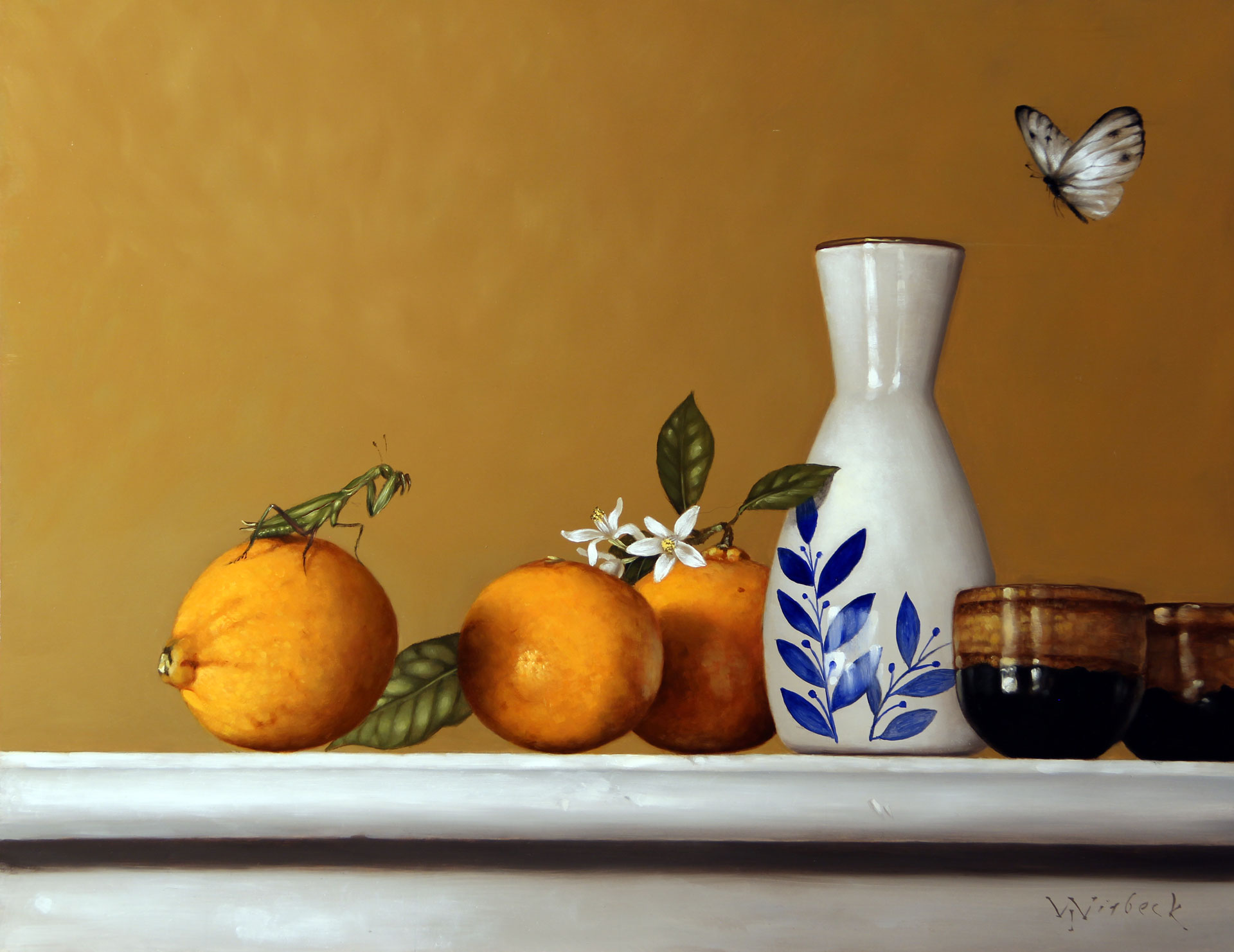Whitbeck Notes
Spring 2024
1839
18" x 24". oil on panel
They are everywhere once you begin to look, some more obvious than others. Softly alighted atop an Iris, inching along a marble table top, clinging to an upright stem or fluttering across a panel in the shadowy recesses of the background. They are, for sure, not the main players in the scene, but without them the impact would be lacking. These are, of course, the wonderful insects that you can find scattered throughout most 17th century Dutch florals. It is the bugs and creatures that I am now talking about. Their individual personalities, or character if you like, punctuating here, exclaiming there, softening or strengthening an area of the painting and adding in their small but powerful way to the narrative of the piece.
For me this is the dessert of the painting process. After a month or so of working up the flowers and bringing them to their final stages I always get that twinge of excitement as I go through my various photos of bugs and birds, frogs and spiders figuring out which ones will be added throughout this new painting. Sometimes it is just one or two, other times it can be a myriad of insects, it all depends on the composition and how it all comes together. It is also, for me, more for the visuals and the "flavor" the bug adds to the painting; a little white moth flying in to land on a tulip adds a nice accent against the black of the background; the size of the Leopard Frog helps anchor a floral, sitting snug next to the glass vase; a trio of bumble bees with their black and yellow bodies help alleviate the mostly white of a picture; or a wren, perched just so, adding to the story of a piece, helping turn the gears of the viewers imagination.
For the Dutch painters and illustrators of the early sixteen hundreds it was partly that, but also sometimes much more. In extending the reach of sight through the recent invention of the microscope, a whole new fascinating world had been opened up to them and the desire, maybe even craze, to study, collect and record all of this new visual information also opened up a new subject matter for the painters to explore and experiment with.
As an example, at the end of the sixteenth century Emperor Rudolf II, King of Hungary and Croatia commissioned the last of the great illuminators of the period, Joris Hoefnagel of Flanders to illustrate a Model Book of Calligraphy. This calligraphy book had been completed years before under the rule of Rudolfs father, Ferdinand I and was just script alone. Magnificent in its own right. But Rudolf, caught up in this new fascination of the natural world, had asked Joris to take his eye for detail and create something to accompany the script that fit with this theme. And indeed he did! Amazing detailed illustrations, about 40 plus, each with a combination of flowers, insects and fruit, sometimes mice too. It seems to most that he was one of the first to combine these all together in such a creative and scientific manner, paving the way for artists to come. Where visually it is pleasing to the eye, one could also use these paintings with their extraordinary attention to detail to identify flora and fauna in the real world, they were that accurate! This was the first step towards the creation of those great floral paintings of the 16th and 17th centuries in which our winged (and not winged) friends make their appearance.
You can see that for the artist, as well as wanting to be accurate, it was also very much a show of skill, "Look how well I can render the web-like veins in the wings of this dragonfly." And I too find myself caught up and pulled into the ever more detailed layers of, say, the beautiful wing feathers of a bird, or what looks like to me the expression of a butterflies face. It is hard not to! And like I said, for me it is the dessert, the final act to this intricate play, the completion to the painting.
One of the other aspects for me in adding insects to my paintings is also that of the subjects place in our environmental world. At first I was just choosing insects as they seemed to fit well in a certain place; a butterfly here, a moth there, a few shells scattered about the tabletop foreground, compositionally good and fitting into the overall feel of the painting. But some years ago my older brother, who works as a biologist at a wildlife refuge in Maryland, after noticing that I had been adding bugs to my paintings told me about the Rusty Patch Bumble Bee and how it had been put on the endangered list some years ago. That caused a little spark in me. Ah! A story to one of my characters! Things just became a bit more interesting. It now added to the overall feel of the painting, a hidden narrative. Not just a bee, but an endangered one. Another was the Frosted Elfin Butterfly, designated as a "special concerns" species. Once again, my brother had sent me an article about this beautiful, tiny (only about the size of a quarter) butterfly and how it has been making a come-back thanks to the planting of the Sundial Lupine plant, on which the caterpillars will only lay their eggs as well as one other, the Wild Indigo. And as it turns out, the area this has been occurring in is the Montague Plains, "the largest inland pine barrens habitat in Massachusetts", only about an eighth of a mile from my home and studio! Needless to say, but the Elfin has made its appearance in my paintings a few times already. And so it is through occurrences such as these that I now find myself more and more deciding which insects will be added to a piece. And, of course, they all can't be done this way. Their amazing beauty, or their fascinating patterns alone are enough for me to make the decision to tape the photo to the easel and render it onto the panel.
Hummingbird and Butterfly
13" x 20" oil on panel
_________________________________________________________________________
Having recently returned from our first art shows of the year in Florida, I have to say it always feels good to return home. But that being said, I also have to say that not two days ago my wife Gale and I looked at each other and both stated how we couldn't wait for the Florida tour next year! It has become quite a little adventure for us, and with our new camper van set-up, it has become so much more enjoyable. Plus the two shows were great as far as sales went and that helps too! So now I am back in the studio working up new paintings for the Chicago tour come June. This will be, first, two Chicago shows:
57th Street then Old Town and then a couple weeks later the Des Moines art show, then back home. Click here to go to my Art Shows website page to view all the details on these shows as well as their official websites. New shows will be added as I get their information. Also you can view new paintings by visiting my website at www.jameswhitbeck.com. All available pieces will be posted, and be sure to check before the shows to see the most recently completed ones.
All my best,
and see you down the road!
James Whitbeck
(413) 695-3937
Mantis and Moth
14" x 18". oil on panel

